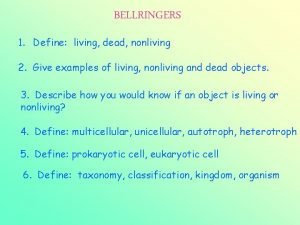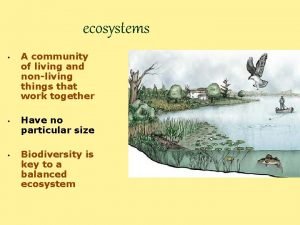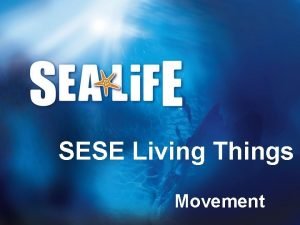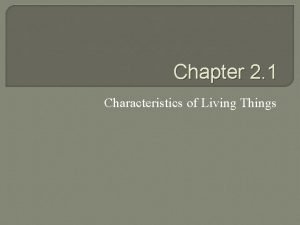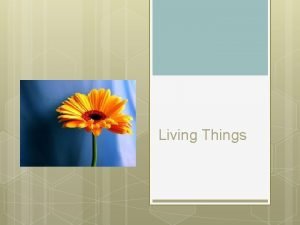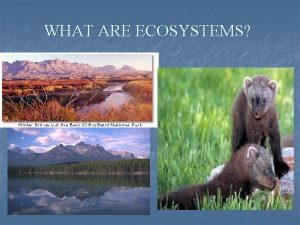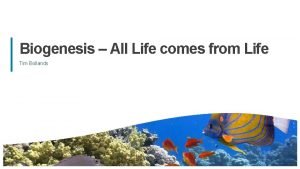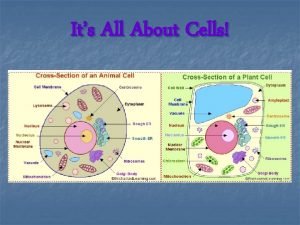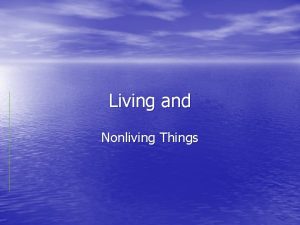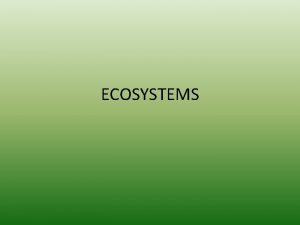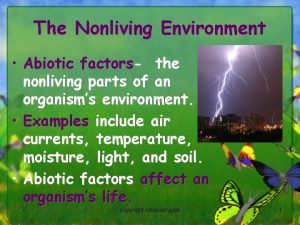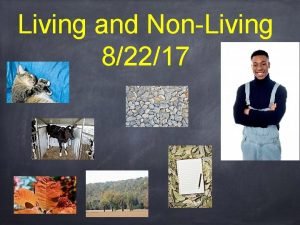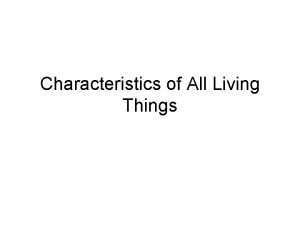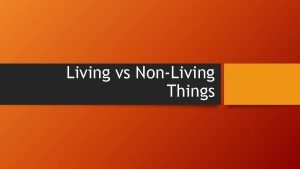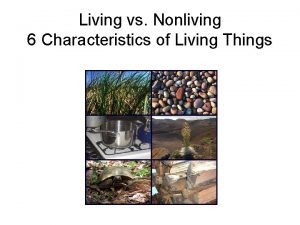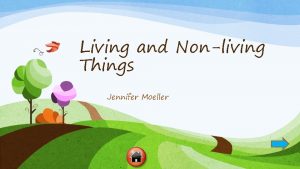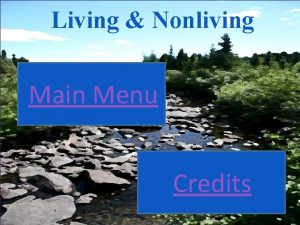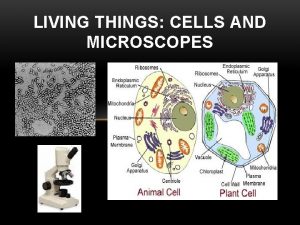IS IT ALIVE S NONLIVING REASONSKETCH LIVING OR















- Slides: 15

IS IT ALIVE? S NON-LIVING? REASONSKETCH LIVING OR NON-LIVING? REASON

Entry # 11 SKETCH LIVING OR NON-LIVING? REASON

Living or nonliving? A burning candle is non-living. The wax may have been produced by living things, but it is not living. It is not made of cells. The light moves and flickers and the candle uses oxygen and gives off carbon dioxide, but it is only a chemical reaction, not life

Living or nonliving? Plants are living organisms. They are made of cells which are organized throughout. They grow and reproduce. Plants make their own food to meet their energy needs

Living or nonliving? All living things need water, but water is not alive. It can move, but is not made of cells and cannot grow and reproduce

Living or non-living? Limestone is non-living. It cannot grow and reproduce or respond to its environment. It is not made of cells.

Living or nonliving? The seeds that make up birdseed are living. Seeds are a dormant phase in a plant’s life. Given the proper conditions, the seed will sprout and grow into a plant which will produce more seeds. .

Living or nonliving? the objects on the driftwood are the remains of once-living animals called barnacles. The hard parts remain after the animal has died. Barnacles attach themselves to objects and capture food as it floats by.

Living or nonliving? Shells are the remains of living things. The animals they represent grow, reproduce, respond to environment and are made of cells.

Living or non-living? Moss is a non-vascular plant which makes it living. It carries out photosynthesis in order to make its own food.

Living or nonliving? Yeast is a living organism. It is a single-celled fungus. It grows and reproduces. The bubbles you see on top of the yeast solution are bubbles of carbon dioxide given off by the yeast as it carries out the process of cellular respiration.

Is it Alive? A lizard is alive. It is made of cells. It responds to its environment, takes in nourishment, reproduces, and grows and develops.

Is it Alive? Salt is a mineral. It in a non-living substance. It is not made of cells. It is composed of 2 elements: sodium and chlorine.

Living or non -living? Frogs are living animals. They undergo metamorphosis as they grow and develop. They respond to their environment and reproduce.

Living on nonliving? The mold on the tomato is living. It grows and reproduces. It is made of cells. It consumes food for the energy it needs…that would be the tomato in this case.
 Alive alive forevermore
Alive alive forevermore He's alive frankenstein
He's alive frankenstein Is sulfolobus living or nonliving
Is sulfolobus living or nonliving Parasitism
Parasitism Nonliving particle that replicates inside a living cell
Nonliving particle that replicates inside a living cell Living vs nonliving characteristics
Living vs nonliving characteristics Ecosystems examples
Ecosystems examples Is a starfish living or nonliving
Is a starfish living or nonliving Egg living or nonliving
Egg living or nonliving Is candle a living thing
Is candle a living thing Living and nonliving things venn diagram
Living and nonliving things venn diagram Tree is living or nonliving
Tree is living or nonliving Non living things in grassland
Non living things in grassland Living things
Living things Nonliving cells
Nonliving cells Is moss living or nonliving
Is moss living or nonliving


